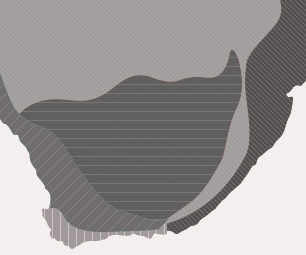Bulb
Nerine laticoma (Ker Gawl.) T. Durand & Schinz
Family:
Common names: vleilelie, gifbol, jeukui, seeroogblom (Afr.)
Plant Attributes:
Plant Type:
SA Distribution:
Soil type:
Flowering season:
PH:
Flower colour:
Aspect:
Gardening skill:
Special Features:
Horticultural zones

Nerine humilis (Jaqu.) Herb.
Family:
Common names: dwarf nerine (Eng.); seeroogblom, berglelie (Afr.)
Plant Attributes:
Plant Type:
SA Distribution:
Soil type:
Flowering season:
PH:
Flower colour:
Aspect:
Gardening skill:
Special Features:
Horticultural zones

Nerine filifolia Baker
Family:
Common names: grass-leaved nerine (Eng.)
Plant Attributes:
Plant Type:
SA Distribution:
Soil type:
Flowering season:
PH:
Flower colour:
Aspect:
Gardening skill:
Special Features:
Horticultural zones

Moraea polystachya (Thunb.) Ker Gawl.
Family:
Common names: blue moraea, blue tulp, poison moraea (Eng.); bloutulp, kraai-uintjie (Afr.)
Plant Attributes:
Plant Type:
SA Distribution:
Soil type:
Flowering season:
PH:
Flower colour:
Aspect:
Gardening skill:
Special Features:
Horticultural zones

Moraea elegans Jacq.
Family:
Common names: poutulp (Afr.)
Plant Attributes:
Plant Type:
SA Distribution:
Soil type:
Flowering season:
PH:
Flower colour:
Aspect:
Gardening skill:
Special Features:
Horticultural zones

Moraea worcesterensis Goldblatt
Family:
Common names: No names recorded
Plant Attributes:
Plant Type:
SA Distribution:
Soil type:
Flowering season:
PH:
Flower colour:
Aspect:
Gardening skill:
Special Features:
Horticultural zones

Moraea villosa (Ker Gawl.) Ker Gawl.
Family:
Common names: peacock moraea (Eng.); uiltjie (Afr.) Two subspecies are recognized: subsp. villosa and subsp. elandsmontana Goldblatt
Plant Attributes:
Plant Type:
SA Distribution:
Soil type:
Flowering season:
PH:
Flower colour:
Aspect:
Gardening skill:
Special Features:
Horticultural zones

Moraea tulbaghensis L.Bolus
Family:
Common names: rooiflappie (Afr.)
Plant Attributes:
Plant Type:
SA Distribution:
Soil type:
Flowering season:
PH:
Flower colour:
Aspect:
Gardening skill:
Special Features:
Horticultural zones

Moraea tripetala (L.f.) Ker Gawl.
Family:
Common names: blue tulp (Eng.); blou-uintjie, kleinuiltjie, bok-uintjie, riet-uintjie (Afr.)
Plant Attributes:
Plant Type:
SA Distribution:
Soil type:
Flowering season:
PH:
Flower colour:
Aspect:
Gardening skill:
Special Features:
Horticultural zones

Moraea loubseri Goldblatt
Family:
Common names: None recorded
Plant Attributes:
Plant Type:
SA Distribution:
Soil type:
Flowering season:
PH:
Flower colour:
Aspect:
Gardening skill:
Special Features:
Horticultural zones






Rate this article
Article well written and informative
Rate this plant
Is this an interesting plant?
Login to add your Comment
Back to topNot registered yet? Click here to register.